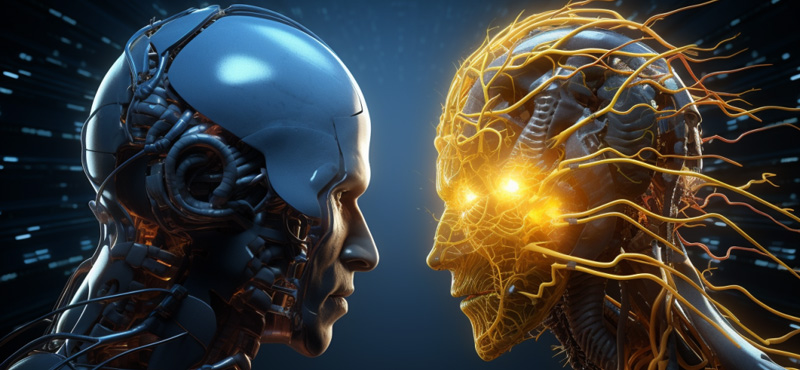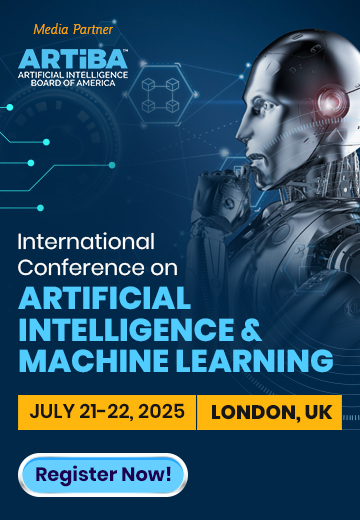Generative AI vs. Traditional AI: Key Differences and Advantages

The latest buzzword in every industry today is undeniable – AI or Artificial Intelligence. The most prominent research institutes, like McKinsey, Gartner, PWC, etc., have predicted AI as the future. According to the PWC's report published in 2018, AI will contribute about $15.7 trillion to the global economy by 2030. Also, Next Move Strategy Consulting has forecasted that the market value of AI will grow twentyfold from 100 billion USD in 2021 to 2 trillion USD in 2030.
The AI is not restricted to a few industries. Its ambit encompasses a vast number of industries in nearly all fields. It has become imperative for all industries to adopt artificial intelligence and use it within their business structures. Some of the top applications that have already become popular include Chatbots, image-generating AI, creating video avatars, many mobile apps, etc. What cannot be ignored is that there have been significant advancements in this technology. Due to the skyrocketing focus on AI, knowing and understanding its subsets has become essential.
As we delve deeper into the Artificial Intelligence ecosystem, we will know it has distinct forms. Two prominent branches in the AI landscape have gained considerable attention – traditional AI and generative AI. Here in this article, we will explain generative AI and traditional AI, their differences between the two, and the advantages they provide.
Traditional AI: What does it mean?
Traditional AI is also called the Narrow AI. This is rule-based AI that performs specific tasks according to the pre-set rules and algorithms. This AI component follows the pre-written program and performs the task accordingly. Traditional AI does not create new content or respond to new situations without extra programming. This type of AI is vital in augmenting business processes and efficiencies.
Traditional AI focuses on doing the assigned task intelligently. It responds to a set section of inputs. These AIs are trained to follow set rules and are not programmed to develop anything new. Today's industries use traditional AI across various business functions like finance, marketing, supply chain, manufacturing, technology, retail, etc. These industries use AI to automate processes and improve operations.
Generative AI: What does it mean?
The recent buzz in the AI world is the generative AI! Generative AI is a rather new artificial intelligence technology capable of producing something new. So, this inventive type of AI can create new content like videos, images and can invent high-quality content in a matter of seconds.
Also called Creative AI or Strong Artificial Intelligence, Generative AI takes a prompt from a text, image, video, design, and varied types of inputs to process. The next-generation AI can transform a single piece of information into original content, including solutions, images, adventure stories, and more, greatly expanding its creative capabilities.
The generative AI is not just restricted to producing text outputs but music and computer code, too. Early versions of generative AI needed API data submission, where the developers had to learn various tools and language applications. Generative AI has offered better user experiences that accept a request in plain language.
Traditional AI vs Generative AI: The differences
While both are critical and a subset of the same group, these are two separate components that follow different principles and offer distinct applications. Though closely related, they have key differences in the following parameters:
Approach
Generative AI creates new and original content, while traditional AI works according to the set rules and guidelines.
Learning
Generative AI learns from existing content data or unsupervised learning, while traditional AI models use labeled data sets for training or supervised learning.
Usage
Generative AI is used to create new art, designs, music, video, etc., while traditional AI is used to devise solutions, make decisions, and automate tasks.
Adaptability
Generative AI offers high creativity and adaptability as it can instantly create new content and adapt to different data distributions. Traditional AI lacks creativity and adaptability as it does not generate new content or adapt to new situations.
Flexibility
Generative AI is more versatile and flexible, while Traditional AI is highly specialized.
Traditional and Generative AI: Practical Implications
The traditional AI system learns the data and makes predictions according to the received data. It does not invent new ways and works as per the programmed strategies. In other words, the traditional AI makes smart decisions based on a particular set of rules. For example, you would have used voice assistants like Siri or Alexa. They run on traditional AI. Other examples include OTT recommendation engines, Google's search algorithm, YouTube, etc. Detecting fraud, conducting medical diagnosis, stock trading, video games, and using other predictive analyses are the use case examples for traditional AI.
Other widespread applications of traditional AI in the world include:
-
Email Spam: Some filters send spam emails to a separate folder, while genuine mail is retained in the main mailbox.
-
Online Buying: When you visit an online store; you will see products suggested for you. These are based on your past behavior and preferences. This built-in traditional AI system suggests products according to your interests.
-
Games: When playing games on the computer, the traditional AI will create playing algorithms adhering to the set strategies.
-
Automation: AI professionals can automate tasks and focus on other key business areas. People can benefit from robotic process automation and automate mundane tasks.
Now consider GPT 3 or 4, an important example of generative AI. Trained immensely, it can produce text that a human writes. Other use cases of generative AI include:
-
Image generation: Have you ever heard of or used Generative Adversarial Networks or GANs? This generative AI tool can create real or surreal images of objects and humans that do not exist.
-
Music: Generative AI can also create original music compositions.
-
Videos: AI systems can generate videos, too, like deepfake technology. Using the same, AI professionals can compile videos from text and make short videos with existing images.
-
Customization: Generative AI can create personalized experiences like product recommendations, make resumes, devise interview strategies, suggest career plans, etc.
Traditional AI: The Benefits
Here we list some of the best advantages of Traditional AI:
-
01. Predictable results
Traditional AI uses a rule-based approach, leading to defined and predictable results. The users are better aware of how the AI has arrived at a specific decision or solution based on the predefined rules. The users adore this transparency feature of traditional AI and find it vital to carry out critical functionalities like healthcare, finance, legal, etc.
-
02. Proven performance
Traditional AI and ML offer incredible efficiency. This type of AI does not take much time to address a particular problem and suggest a solution. Traditional AI is built to optimize algorithms and arrive at a performance-driven measure. Due to the quick processing time, its efficiency is enhanced further.
-
03. Automation
This AI is particularly known for its ability to automate tasks. The robotics and manufacturing industry uses AI for its consistent and reliable performance. AI performs repetitive tasks without fail. This means higher productivity and cost-saving in the long run.
-
04. Best for labeled data tasks
Traditional AI needs labeled data abundance for learning. Traditional AI models work effectively to achieve precision and incredible performance.
-
05. Stability
The development in the field of traditional AI has been gradual. It has become a stable and mature technology after developing and improving.
Generative AI: The Benefits
The following are the most significant benefits of Generative AI:
-
01. Creativity
The best thing about Generative AI is its ability to produce original content. It takes time to create new images, text, music, painting, videos, etc. This has significantly transformed art, design, entertainment, and media.
-
02. Works for less data
When the data or information is low and missing, generative AI can effectively fill the gaps based on the existing data patterns. This leads to dataset augmentation and better performance in medical imaging, diagnostic assistance, and various other domains.
-
03. Education and Research
Generative AI can create personalized learning experiences and generate new hypotheses.
-
04. Accentuated virtualization
Many fields, like architecture, gaming, and interior design, have been using Generative AI to create virtual models for simulation and better planning.
AI and ML: Revolutionizing the world
AI and ML has been revolutionary since its inception. Generative AI would work with traditional AI to offer users better and more powerful solutions. For example, while traditional AI might analyze consumer behavior, a generative AI can use the same to create customized content. The future AI models will mix Traditional AI's rule-based reasoning and Generative AI's adaptive learning.
There is no denying the fact that the future of AI and machine learning is bright. Generative AI and traditional AI - are both powerful and emerging technologies. Their roles are crucial in developing and revolutionizing the busines
Wrapping Up
Understanding Traditional AI and Generative AI in detail helps us dig deeper into the fascinating field of AI. We learned that traditional AI excels in performing specialized tasks as per the predetermined rules, and Generative AI is more creative and flexible. In the future, it will be interesting to witness how these two branches of AI will unfold more and lead to more advanced systems.






